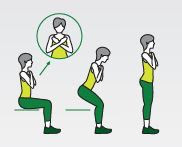I feel sorry for those who lost their sense of smell after contracting Covid. I think most people regained that sense, but it would be awful to lose it permanently! It not only affects our enjoyment of food and perception of our surroundings, but it also plays an important role in our social interactions. It turns out that our body odors convey information to others—all subconsciously, of course.
Researchers can now use behavioral measures, brain imaging
and molecular biology to test how odors affect people. Here are some
interesting factoids revealed through their studies:
- Most new mothers were able to identify their babies by their smell after spending as little as 10 minutes together, and newborns can recognize their mothers.
- People can match pairs of identical twins by their body odor, even if the siblings live apart.
- People who smell similar to each other were more likely to enjoy chatting with one another.
- Women’s brains reacted more strongly when they smelled the sweat of men who played an aggressively competitive game, than they did after smelling the odors of men who had just enjoyed a calm construction game.
- People with a better sense of smell had a larger social network and more friends. fMRI studies revealed that the same brain circuits may be involved in both our sense of smell and the size of our social circle.
- Sniffing women’s tears makes men less aggressive.
This last one is interesting. Conducting the study was a
challenge because of the difficulty of collecting tears from donors.
Researchers needed at least one milliliter (a quarter of a teaspoon) of tears for
the experiment. Onions didn’t work because irritants create a different type of
tears, so researchers had to find volunteers who cry easily, then had them
watch sad movies. Testing men’s reactions to tears required game playing and
MRI brain scans. Researchers found that when men sniffed the women’s tears,
they were 44 percent less aggressive in the game than when they sniffed a
saline solution. Also, the region of the brain associated with aggression
showed less activity.
Someone should manufacture those tear ingredients and rain it
down on some groups. I can think of lots of candidates.
For an introduction to this blog, see I Just Say No; for a list of blog topics, click the Topics tab.


